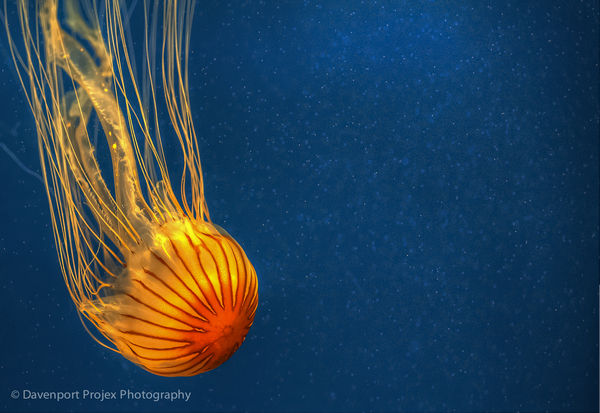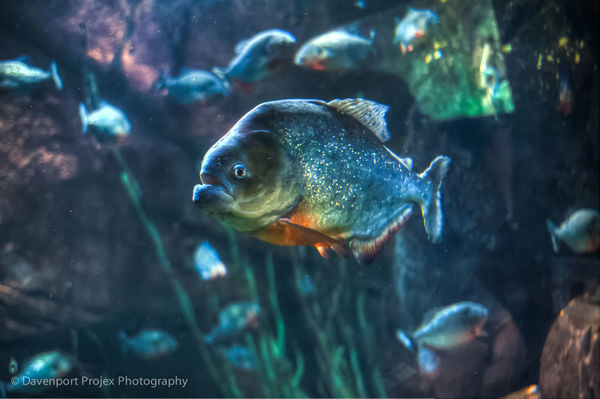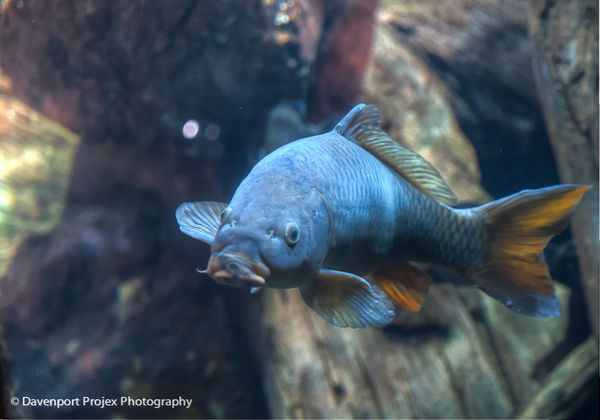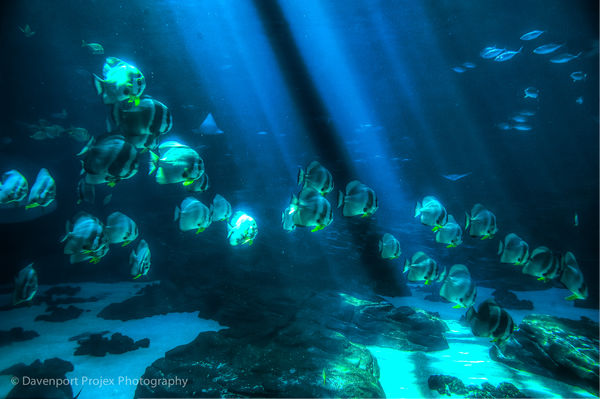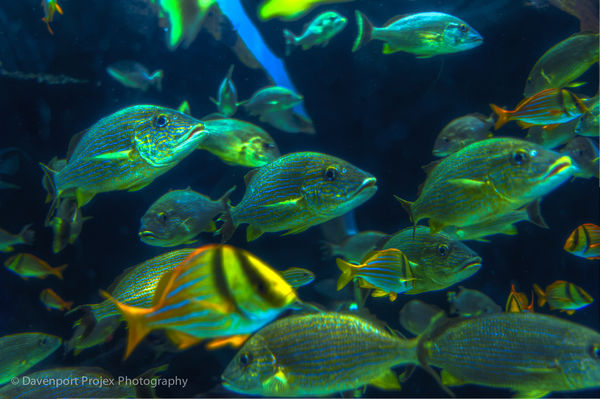f stop for shooting through glass
Jun 6, 2017 14:51:00 #
willaim wrote:
Position the lens right up to the glass being careful not to have the front element touching the window. A rubber lens hood helps. This will eliminate the reflections. Disable the AF and focus manually. Set the f/stop for DOF you want. If for some reason you want to show you are shooting through a window, keep the AF disabled as the AF will focus on the nearest object, which in this case, might be a reflection. Practice, practice, practice.
You want inside to be darker than outside - that will eliminate most reflections. Beyond that, try to stand close to the window (*), and always just shoot as you always do. Window glass does tend to slightly reduce sharpness, but a slightly-not-sharp image is better than no-image.
(*) I've discovered that animals do sometimes notice me on the other side of the glass. I try to wear dark clothing, but sometimes I have to step a few feet away from the window so I'm no longer noticeable to them.
Jun 6, 2017 16:16:43 #
If you can't put the lens on the glass, wear black clothing or drape your self in a black sheet, turn out all room lighting and proceed.
Jun 6, 2017 18:22:30 #
speters wrote:
The best f stop is always the one that gives you the DOF you want, it does not matter if shooting through glass or not!
Yes, but... It's worth having a Depth of Field Calculator App on your smart phone, so you can use the aperture that will give you the depth of field you need, without diffraction.
Many older folks on UHH want to use f/stops a lot smaller than the *diffraction limiting aperture* for their lenses. Many in this age group (I'm included) grew up with size 120 film, full frame 35mm perforated film, and even 4x5 or 8x10 view cameras. There isn't much of a problem with f/32 on a 6x9 camera, but on APS-C it'll give you a really mushy image! Even f/16 is a couple of stops into the diffraction range on APS-C cameras, where sharpness suffers noticeably.
Remember, the lower the f/number, the WIDER the aperture (It's a fraction). The WIDER the aperture, the shallower the Depth of Field.
Most lenses perform at their sharpest around one to three f/stops smaller than their maximum aperture.
I've done a lot of work through glass, and know from experience that unless both sides of the window are reasonably clean, a small aperture will result in reduced sharpness, and you may even see fuzzy blobs from partially focused crud, if you're using a wide angle lens. Uncoated glass nearly always increases flare and decreases contrast. You can minimize that by keeping the glass in shadow, as you would your lens when using a lens hood.
Jun 6, 2017 19:59:00 #
Don's Leica
Loc: Asheville, NC
I got a few shots by pressing my Leica Q lens hood against the window at Big Ivy Historical Park's old log cabin. It was fairly dark inside. No special camera settings, f/5.6.
Jun 6, 2017 20:09:22 #
mountainbirder wrote:
Is there a "best" f stop to use when you have to shoot your subject through single pane or double pane glass?
If your subject is fairly far an the glass is dirty (and cannot be cleaned), shoot wide-open and at longer focal lengths. That shallow depth of field will drastically reduce the intrusion of dirt or other small imperfections. I've even shot through screens with decent (though lower contrast) results. I have a 50mm f/0.95 lens that shot wide-open through a thin silk sheet makes for mystical soft portraits.
Jun 6, 2017 20:41:35 #
mountainbirder wrote:
Is there a "best" f stop to use when you have to shoot your subject through single pane or double pane glass?
You have a lot of good information for shooting thru glass. Four years ago I used my 400mm prime lens mounted on a tripod and set back about two feet from a 7 foot double pane insulated glass window. Focusing thru the window to get some pictures of birds eating mini crabapples. It was February and mostly a cloudy day. I did make sure inside window was clean, however, since I was on the second floor I didn't worry about the outside window surface.
First is CedarWaxwing f/6.3, 1/320 sec, iso 1600, 400mm
Second is Robin f/8, 1/640, iso 1600, 400mm
Third is Starling f/7.1, 1/500, iso 1600, 400mm

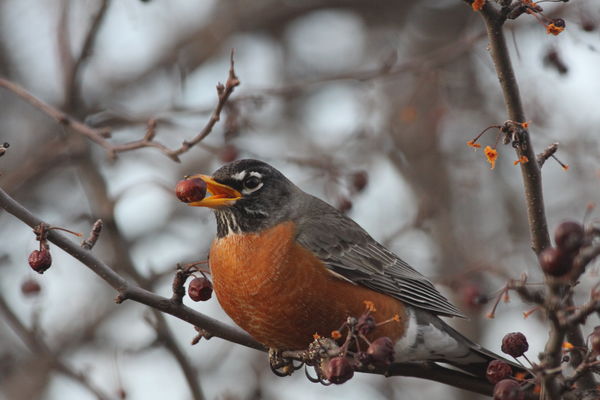

Jun 7, 2017 06:31:30 #
mountainbirder wrote:
Is there a "best" f stop to use when you have to shoot your subject through single pane or double pane glass?
I don’t know if there is a “best” f/stop to use when shooting through glass. I did tend to keep the aperture fast when shooting the Atlanta Aquarium (see attached samples). I physically place the lens on the window. Be careful though, sometimes the movement and vibrations of the building can bump the camera . There are photographers who use a polarizing filter to remove reflections. For me, it’s hit or miss. A polarizer seems to help reduce reflections but not eliminate them. In fact, this can create another problem. For instance, if you don’t have the luxury of shooting with an external monitor, it can be hard to tell if a reflection is present or not. The reflections may seem to vanish on a tiny camera LCD screen, but when viewed on a computer monitor they may be revealed. I have UV filters on all the lenses I own that are capable of mounting one.
Image 1
Nikon D700
Sigma 24-70mm f/2.8
Aperture: ƒ/3.3
Focal Length: 70mm
Shutter Speed: 1/90
ISO: 1600
Image 2
Aperture: ƒ/2.8
Focal Length: 31mm
Shutter Speed: 1/60
ISO: 1600
Image 3
Nikon D700
Sigma 24-70mm f/2.8
Aperture: ƒ/2.8
Focal Length: 70mm
Shutter Speed: 1/60
ISO: 1600
Image 4
Nikon D700
Sigma 24-70mm f/2.8
Aperture: ƒ/2.8
Focal Length: 24mm
Shutter Speed: 1/60
ISO: 1600
Image 5
Nikon D700
Sigma 24-70mm f/2.8
Aperture: ƒ/2.8
Focal Length: 31mm
Shutter Speed: 1/180
ISO: 1600
Jun 7, 2017 06:33:47 #
Jun 7, 2017 06:36:47 #
my rear door and storm door have glass, in the winter I sometimes shoot through both panes with ok results. I use normal aperture settings. in warmer weather I open the rear door and shoot through the storm door.
Jun 7, 2017 06:55:17 #
bull drink water wrote:
my rear door and storm door have glass, in the winter I sometimes shoot through both panes with ok results. I use normal aperture settings. in warmer weather I open the rear door and shoot through the storm door.
Please help me to understand what a "normal aperture setting" is?
Jun 7, 2017 10:05:24 #
dhelix33 wrote:
I don’t know if there is a “best” f/stop to use wh... (show quote)
Nice work!
This makes me want to take my GH4 and 12-35mm (24-70 equivalent FF field of view) with a polarizer to the nearest aquarium and play...
Jun 7, 2017 10:11:15 #
dhelix33 wrote:
Please help me to understand what a "normal aperture setting" is?
Same here...
My personal assumption is that my "normal" aperture is the one that maximizes performance under the circumstances.
I'm usually working between f/2.8 and f/8 on Micro 4/3, preferring to work at f/4 when practical. That will change to a wider aperture set when I add fast primes to the mix.
Whenever I'm in doubt, I refer to the Depth of Field Calculator app on my iPhone...
Jun 7, 2017 10:15:20 #
dhelix33 wrote:
Please help me to understand what a "normal aperture setting" is?
A "normal aperture" has no meaning as all apertures a given lens can be set to are normal. Most likely "normal" in context of shooting through glass was meant to mean "best", in which case I recommend as wide as your lens will go without unduly sacrificing image quality. For some cheap kit zooms, stopping down two or three stops is often required to get decent image quality, however by then there is so much depth of field that dirt on the glass might be visible. With an extremely high quality prime lens wide-open aperture is often fully usable with very high image quality, and of course will completely blur out most spots on the glass up close.
Jun 7, 2017 11:48:01 #
I saw this link earlier today by Serge Ramelli.
He gives a couple of ideas for shooting through glass.
https://www.youtube.com/watch?v=T7e_826XG-g
He gives a couple of ideas for shooting through glass.
https://www.youtube.com/watch?v=T7e_826XG-g
If you want to reply, then register here. Registration is free and your account is created instantly, so you can post right away.






